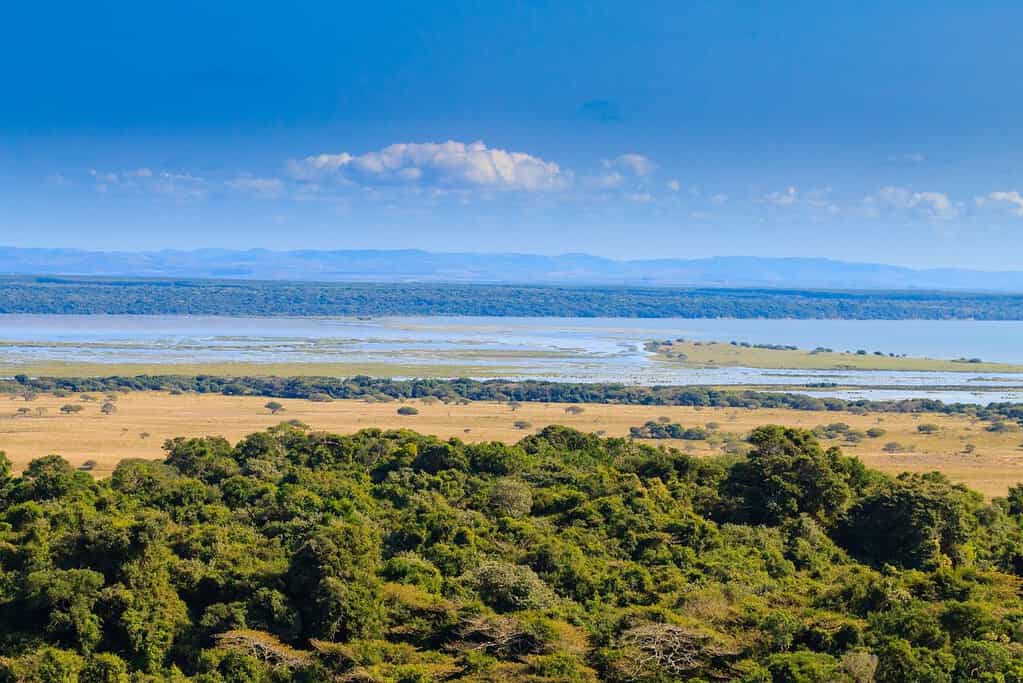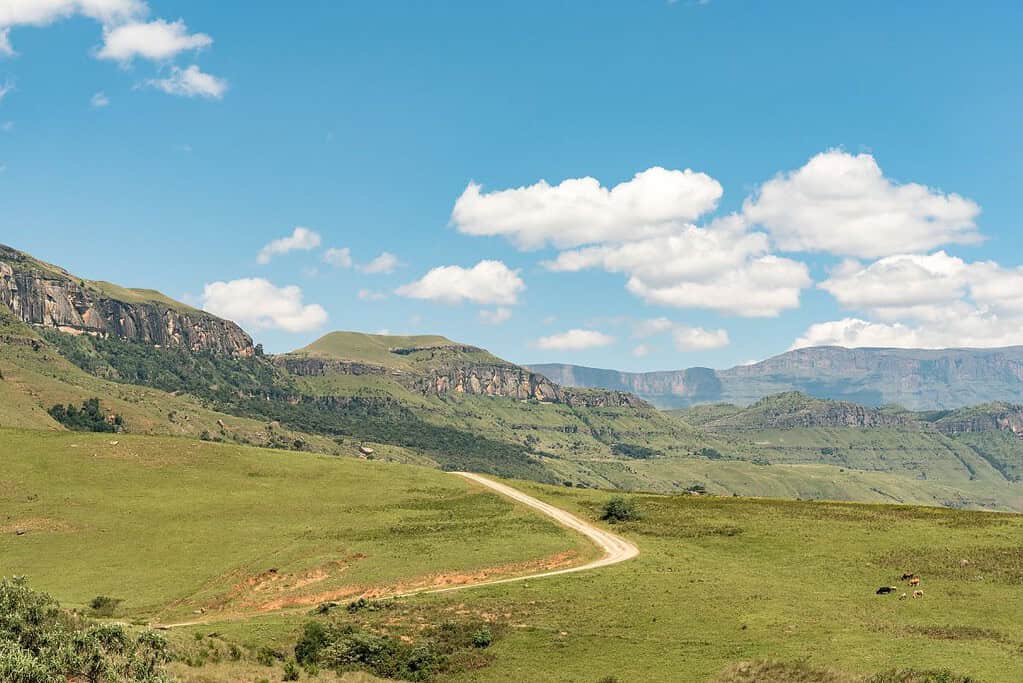Table of Contents
The UNESCO Sites in South Africa have resulted from the recognition of 10 cultural and natural landmarks as UNESCO World Heritage Sites in South Africa and 2 locations on the South Africa UNESCO tentative list. These tourist sites in South Africa are acknowledged for their unique and valuable cultural, natural, artistic, and historical significance and are preserved for future generations to enjoy.
In addition to this 10 site in the South Africa UNESCO list, there are many other places to travel to South Africa that are being considered for UNESCO recognition. These sites, listed on the tentative list, showcase the rich cultural heritage of the country and are waiting for approval to join the prestigious and famous World Heritage Sites list.
To help visitors discover these remarkable South African tourist attractions, we have put together an interactive map of the UNESCO sites in South Africa.
South Africa UNESCO Map
Click markers to show information and photo.
World Heritage Sites in South Africa
UNESCO World Heritage Sites in South Africa
There is 10 UNESCO World Heritage Site in South Africa. All of these three sites are listed under the Cultural category.
- Fossil Hominid Sites of South Africa
- Mapungubwe Cultural Landscape
- Richtersveld Cultural and Botanical Landscape
- Robben Island
- ǂKhomani Cultural Landscape
- Barberton Makhonjwa Mountains
- Cape Floral Region Protected Areas
- iSimangaliso Wetland Park
- Vredefort Dome
- Maloti-Drakensberg Park
UNESCO World Heritage Sites in South Africa are protected locations for their cultural and natural importance.
Fossil Hominid Sites of South Africa
The Fossil Hominid Sites of South Africa is a UNESCO World Heritage Site showcasing the region’s rich fossil record of human evolution. This site is renowned for its significant paleontological discoveries, providing valuable insights into our ancient human ancestors. It includes several important fossil-bearing caves, such as the Sterkfontein, Swartkrans, and Kromdraai sites, which have yielded numerous hominid remains, including Australopithecus and early Homo species. These fossil sites have been pivotal in expanding our understanding of human evolution, making them of great scientific and historical significance.
Mapungubwe Cultural Landscape

The Mapungubwe Cultural Landscape is a UNESCO World Heritage Site in South Africa. It is situated at the confluence of the Shashe and Limpopo rivers, and it encompasses the remains of the ancient Kingdom of Mapungubwe, which flourished between the 9th and 13th centuries. This historical site is renowned for its significant archaeological discoveries, including the famous golden rhinoceros figurine. The landscape showcases the intricate stone walls, remnants of royal palaces, and the remnants of a sophisticated trading society that thrived in the region. The Mapungubwe Cultural Landscape is a testament to the rich cultural heritage and the remarkable achievements of the ancient civilization that once called it home.
Richtersveld Cultural and Botanical Landscape

The Richtersveld Cultural and Botanical Landscape is a remarkable UNESCO World Heritage Site in South Africa. It is a unique and diverse landscape that showcases the harmonious coexistence between the indigenous Nama people and the surrounding natural environment. This vast area is renowned for its rich biodiversity and the presence of numerous endemic plant species, including the iconic Halfmens tree. The Richtersveld is not only a botanical wonderland but also holds immense cultural significance, as it is home to the Nama’s traditional semi-nomadic way of life, their ancient knowledge, and their spiritual connection with the land. Visitors to this extraordinary site can explore the rugged mountains, breathtaking canyons, and vibrant flora while immersing themselves in the vibrant Nama heritage and traditions that have shaped this exceptional cultural and botanical landscape.
Robben Island

Robben Island, located off the coast of Cape Town, South Africa, is a UNESCO World Heritage Site of significant historical importance. It is renowned for its role as a political prison during the apartheid era, where prominent anti-apartheid activists, including Nelson Mandela, were incarcerated. Robben Island is a powerful symbol of the resilience and triumph of the human spirit over oppression. Today, visitors can explore the prison complex, guided by former political prisoners, gaining insight into the harsh conditions endured and the struggle for freedom. This iconic island is a testament to South Africa’s journey towards democracy and social justice.
ǂKhomani Cultural Landscape
The ǂKhomani Cultural Landscape is a UNESCO World Heritage Site in South Africa. This cultural landscape holds immense significance as the ancestral homeland of the ǂKhomani San people, one of the oldest indigenous communities in the world. It encompasses the vast dunes of the Kalahari Desert and its unique ecosystems. The landscape showcases the profound connection between the ǂKhomani San people, their environment, and their rich cultural traditions and knowledge. It serves as a living testament to their history, spirituality, and sustainable practices, making it a truly remarkable and valuable site of global importance.
Barberton Makhonjwa Mountains
The Barberton Makhonjwa Mountains is a UNESCO World Heritage Site in South Africa. These mountains are renowned for their exceptional geological significance, dating back over 3.5 billion years. They showcase some of the world’s oldest and best-preserved rocks, providing crucial insights into the Earth’s early formation and the evolution of life on our planet. The Barberton Makhonjwa Mountains are not only a geological marvel but also host a diverse range of flora and fauna, making it a fascinating destination for scientific research and nature enthusiasts alike.
Cape Floral Region Protected Areas

The Cape Floral Region Protected Areas is a UNESCO World Heritage Site in South Africa. It is a remarkable region known for its exceptional biodiversity and unique floral wealth. Spanning various national parks and nature reserves, the protected areas are home to a staggering array of plant species, including many rare and endemic ones. The region’s stunning landscapes encompass rugged mountains, coastal plains, and diverse ecosystems, providing habitat for a wide range of wildlife. The Cape Floral Region Protected Areas serve as a sanctuary for countless plant and animal species and hold immense cultural and historical significance, making it a truly remarkable and treasured natural heritage site.
iSimangaliso Wetland Park

iSimangaliso Wetland Park is a UNESCO World Heritage Site located in South Africa. This remarkable park showcases the diverse ecosystems found in the region, including wetlands, lakes, dunes, and coastal forests. It is home to abundant wildlife, such as crocodiles, hippos, and various bird species. The park also features pristine beaches and coral reefs, offering breathtaking opportunities for snorkeling and diving. With its stunning landscapes and rich biodiversity, iSimangaliso Wetland Park is a true haven for nature enthusiasts and a testament to the importance of conservation efforts.
Vredefort Dome

The Vredefort Dome is a UNESCO World Heritage Site located in South Africa. It is the world’s largest and oldest known meteorite impact site, estimated to be about 2 billion years old. The dome-shaped structure was formed when a massive meteorite struck the Earth, leaving a distinct crater that spans approximately 300 kilometers in diameter. This site offers remarkable geological and scientific significance, providing valuable insights into the Earth’s history and the impact of celestial bodies. The Vredefort Dome attracts visitors with its stunning natural beauty, offering opportunities for hiking, wildlife viewing, and exploring the remnants of this ancient cosmic event.
Maloti-Drakensberg Park

The Maloti-Drakensberg Park is a UNESCO World Heritage Site located in the border region of South Africa and Lesotho. This park is renowned for its breathtaking mountain landscapes, towering peaks, deep valleys, and dramatic cliffs. It is home to an exceptional collection of rock art, with thousands of ancient paintings created by the San people, providing a valuable glimpse into their rich cultural heritage. The park also harbors a diverse range of flora and fauna, including endemic species, making it a haven for nature enthusiasts and hikers. With its stunning natural beauty and cultural significance, the Maloti-Drakensberg Park is a true gem of southern Africa.
South Africa UNESCO tentative list
- The Emergence of Modern Humans: The Pleistocene occupation sites of South Africa
- Human Rights, Liberation Struggle and Reconciliation: Nelson Mandela Legacy Sites
Tours in South Africa
Our choices of tours in South Africa are divided into thematic features such as Cape Town, Garden Route, and Kruger National Park Experience.
